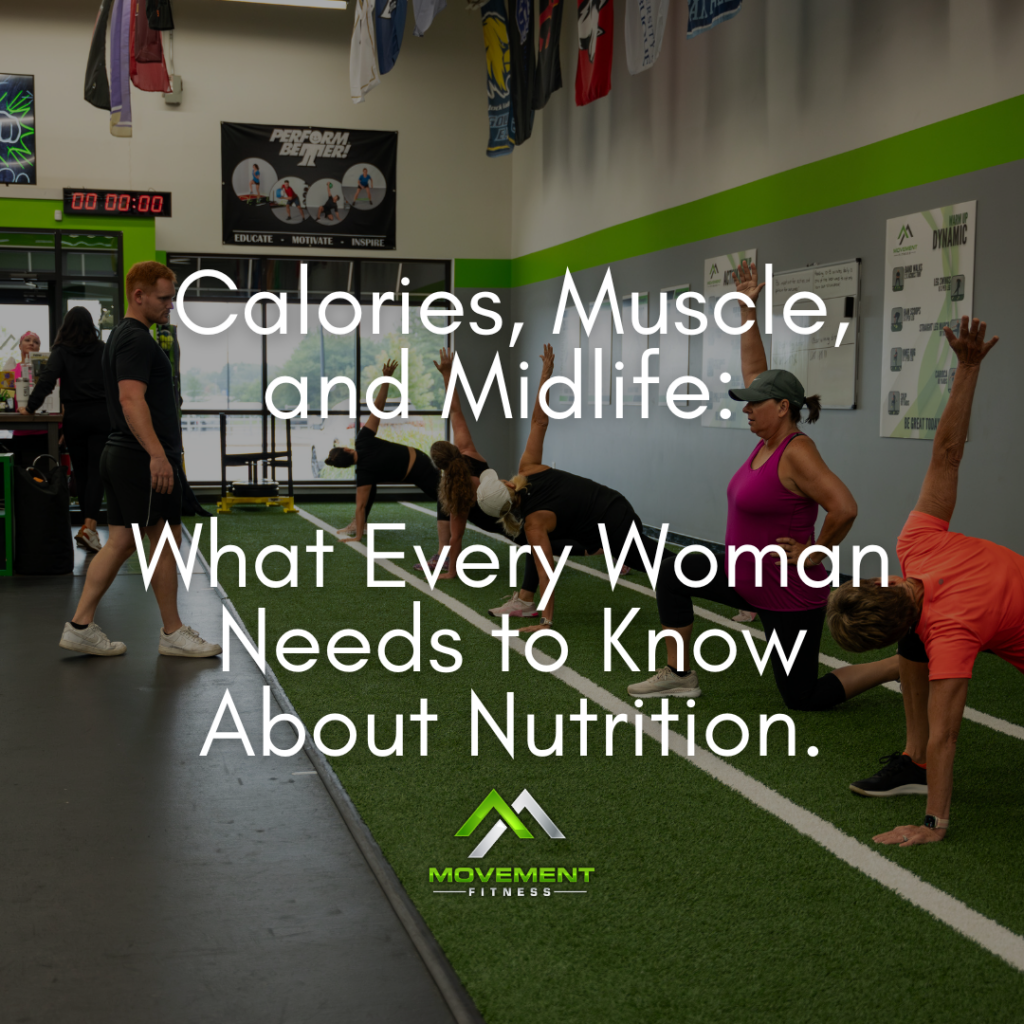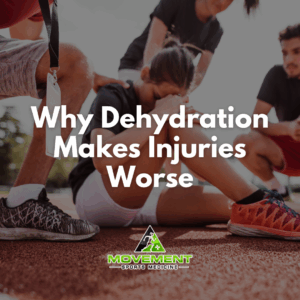Calories, Muscle, and Midlife: What Every Woman Needs to Know About Nutrition.
If you’re a woman in your 40s, 50s or beyond, navigating work, family, and maybe even your own changing body, it’s easy to feel like your health gets pushed down the list.
But here’s something I want you to know: taking time to understand how your body uses energy—your Total Daily Energy Expenditure (TDEE)—isn’t just about fitness. It’s about freedom. It’s about learning how to fuel your body in a way that supports your energy, your hormones, your muscle, and your life, now and in the years to come.
This is not about chasing a number on the scale. This is about reclaiming ownership of your health.
What Is Total Daily Energy Expenditure?
TDEE is the total number of calories your body burns in 24 hours. It includes everything from your workouts and daily steps to the calories your body uses to keep you alive.
The biggest piece of your TDEE is Basal Metabolic Rate (BMR), which makes up about ⅔ of your daily energy expenditure..
Your BMR is the number of calories your body needs just to function. I’m talking about:
- Your heart beating,
- Your brain is firing,
- Your digestive system processes food,
- Your lungs are breathing,
- Your body is regulating temperature,
- And your cells are regenerating and repairing.
This is not optional energy. This is the fuel required just to stay alive and healthy.
The rest of your TDEE includes:
- Your daily movement (like walking, cleaning, chasing kids and grandkids),
- Your exercise, especially strength training,
- And a small bump from digesting the food you eat.
Why This Matters for You
Many women tell us they are frustrated about nutrition and do not understand what to do to achieve their goals. You have been told to eat less, move more, and everything will be alright. Well, you’ve been eating less and working out more, and yet you’re stuck and often tired. Sometimes, even gaining weight.
Here’s why: eating 900 – 1100 calories per day isn’t going to work long term. They also lack the knowledge to understand what they need. You can’t guess your way to results. If you don’t know how much energy your body needs, how can you tell if you’re eating enough to support your goals?
This is why we start with real data, like an InBody scan. It gives you 3 vital numbers:
- Your Basal Metabolic Rate
- Your Lean Body Mass
- Your Percent of Body Fat
When you have this info, you can stop spinning your wheels with extreme dieting or skipping meals. You can start making confident, informed decisions. That’s where real change begins.
Let’s Look at an Example
Here is a client who can help us understand what proper nutrition and energy expenditure should look like:
- 50 years old
- 175 lbs
- 28% body fat
- Roughly 50 lbs of lean muscle
- 5,000 steps per day
- Strength training 3 times/week
Her BMR is about 1,400–1,450 calories/day. That’s just what she needs to support her body’s essential systems.
THIS IS NOT THE NUMBER WE USE TO CUT CALORIES FROM!!!
She’s busy, moving, working, lifting. When we factor in her activity level, her TDEE comes out around 1,950–2,100 calories/day.
That’s her maintenance range, meaning if she ate at those numbers, she would stay the same weight, plus or minus minor variations for water weight. If she wants to lose fat (without sacrificing muscle), we recommend a small, sustainable calorie deficit:
A General Nutrition Starting Point for Her Might Look Like:
- Calories: ~1,750–1,850/day
- Protein: 130–175g/day (1g per pound of lean mass to support strength and recovery)
- Fats: 60–70g/day (from quality sources like olive oil, avocados, seeds)
- Carbs: 130–160g/day (focused around workouts and high-fiber options)
- Fiber: 25–30g/day (for gut health, satiety, and hormone balance)
For some of you, this seems like ALOT of calories, but honestly, this is how you eat to protect your energy, your muscle, and your long-term health.
One major key is that minor adjustments will be made to her nutrition over time. 100-200 calories per week max on average. Wild fluctuations up or down can cause significant metabolic issues.
This Is a Process—Not a Quick Fix
Body composition is one piece of the picture. It’s not everything, but it does matter—because more lean muscle and less excess body fat means better blood sugar control, joint health, mobility, and longevity.
And here’s the truth: your muscle is your metabolism. It’s protective. It helps you age strong. It makes everyday life easier and more enjoyable. But it needs fuel—and the right kind.
This is why we prioritize strength training and eating enough protein to support the goals of longitudinal health.
When you understand your TDEE, you can finally release the guilt around eating. You stop skipping meals or cutting carbs, and start using food as a tool to feel strong, think clearly, and recover better.
Final Thoughts
Now, there are certainly metabolic issues that can affect your body composition and if you suspect them, we highly recommend working with a professional that will take blood labs and evaluate any specific medical nutritional therapies that you need.
The principles written here will work for the majority of women looking to live a long and healthy life and love the skin you’re in.
If you’ve been feeling stuck or unsure of where to begin, this is your invitation to press pause on extremes—and press play on understanding.
You are not broken. You are not too late. And this isn’t about perfection.
This is about building a strong foundation, one decision at a time. Start with awareness, continue with intention, and be led by your purpose.
Owning your health is not for vanity, but for vitality, strength, and the people and passions you love.
You are worth fueling. You are worth building. Let’s do this, together.
Be Great Today,
Justin



